This Museum Gets Real About Climate Change
Miranda Massie’s Climate Museum eases people into activism through art
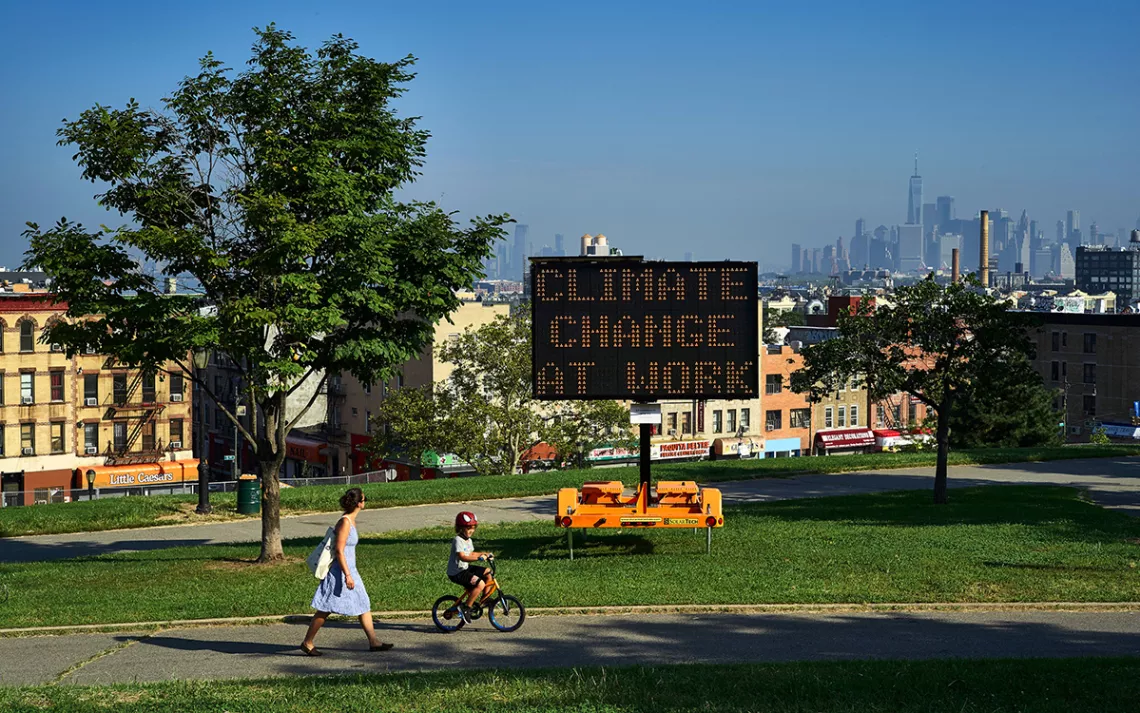
Photo courtesy of Justin Guariglia
Five years ago, Miranda Massie began working full-time on her idea to open a museum dedicated to climate change. A longtime environmental law and civil rights attorney, she had been shaken to her core by Hurricane Sandy in 2012 and needed to do something to confront her growing dread about climate change. But when she told people about her plan, some questioned the need for a brick-and-mortar museum. Why not just create a “really awesome” website dedicated to climate art?
“[I] used to get that all the time. And I was like, ‘Well, because you’re a physical entity,’” Massie recalls from her office in New York. “We show up physically for the things that matter, whether it’s a funeral or a wedding or a birthday party or a museum. People go to museums in part because they are physical spaces with other people in them.”
While Massie’s dream has, in fact, resulted in a website (ClimateMuseum.org), before it finds a permanent physical facility, the Climate Museum has been holding public exhibitions and events throughout New York. These include its current show, the interactive, youth-oriented Taking Action, which will appear through October in historic Nolan Park on Governors Island, where the museum has a three-year arrangement to present its programming free of charge. The museum also has developed partnerships with organizations such as NASA’s Goddard Institute for Space Studies at Columbia University, the New York City Mayor’s Office of Climate Policy and Programs, and the Parsons School of Design. Its board of trustees, meanwhile, boasts veteran members of the scientific, legal, financial, political, and artistic communities.
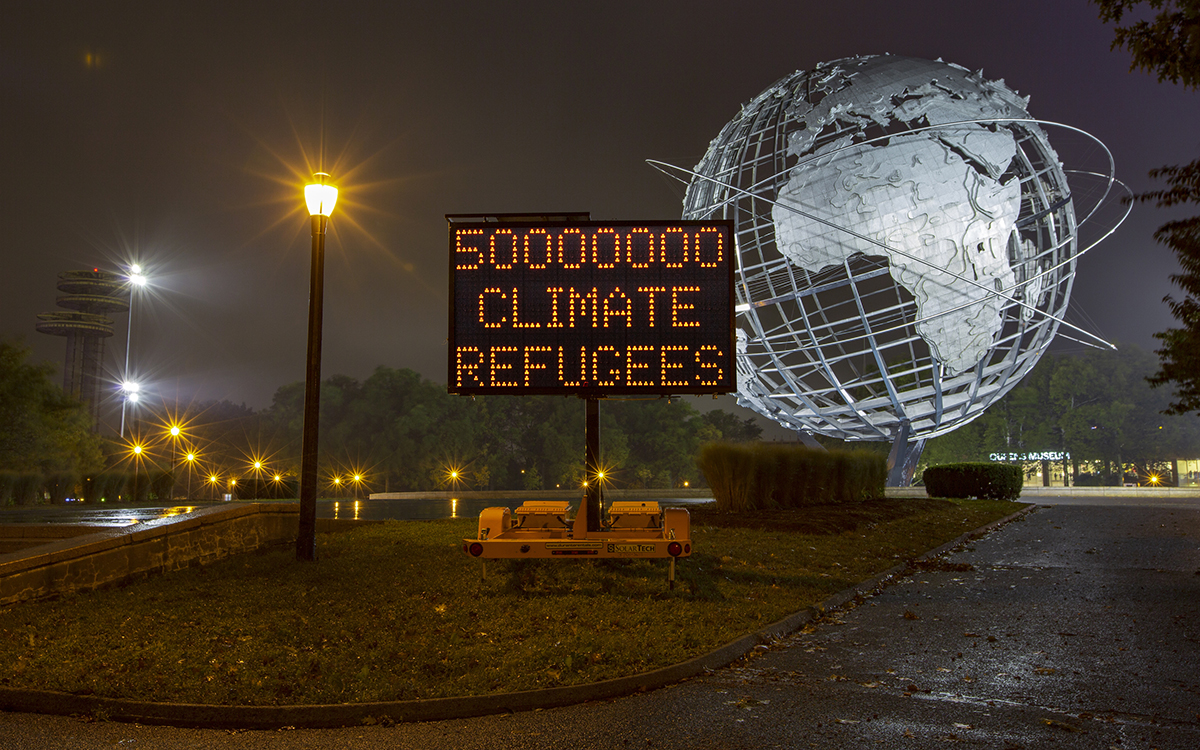
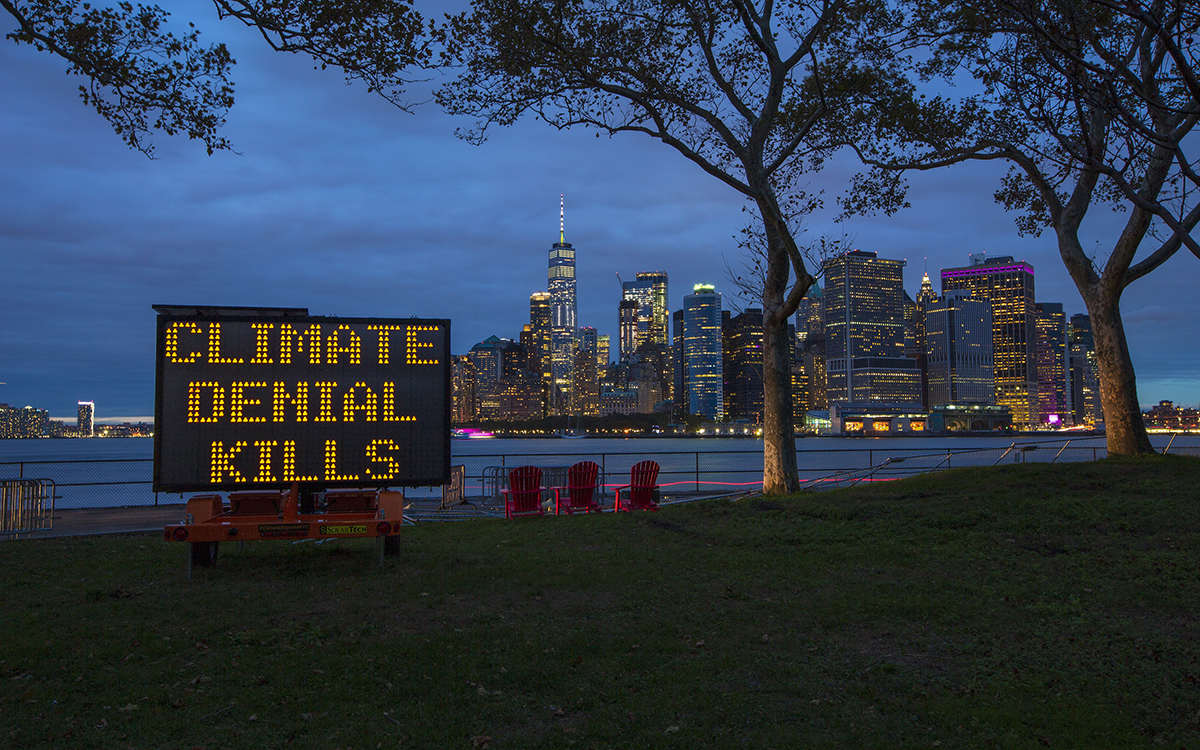
Photos by Lisa Goulet
Art is central to the Climate Museum’s mission. As a former attorney with the civil rights organization New York Lawyers for the Public Interest, Massie spent years litigating and studying social justice issues in Detroit and at Stanford University. She believes arts and cultural programming can offer an easier entry into climate engagement than direct advocacy.
“People need the uplifting feeling of seeing an expression of human creativity as part of a pathway sometimes. Because the climate crisis is scary and overwhelming,” she says. “And so to meet it in the context of a fellow human being making something compelling and beautiful is a more inviting and softer way into engaging.”
The museum’s first show, In Human Time, opened in December 2017 at the Parsons School of Design and featured work by climate-minded installation artists Zaria Forman and Peggy Weil. The show caught the attention of The New Yorker and The Atlantic, among other publications. But Massie wanted to reach more than just art lovers, so the museum took its next exhibition outdoors. The following September, Climate Signals debuted at 10 locations across the city, including Sunset Park in Brooklyn, along Rockaway Beach in Queens, and in other public spaces and waterfront areas. Created by artist Justin Brice Guariglia, the exhibition featured multilingual road signs bearing messages such as “Climate Denial Kills,” “Vota Eco Logicamente,” and “Alt Facts End Now.”
“[Guariglia had] an absolutely brilliant insight,” Massie recalls, “that when you see a road sign, your limbic system gets activated and you know that there’s a safety-related, changing condition ahead and you need to pay attention. What possible medium could be better for communicating a climate message than that?”
Guariglia agrees, saying in an email, “[Massie and I] both shared a belief that we needed to get more people to think ecologically and that art, and more specifically this project, could be an effective tool.” The artist has since displayed similar signs in London, and three others are traveling the United States as part of a project titled We Are the Asteroid.
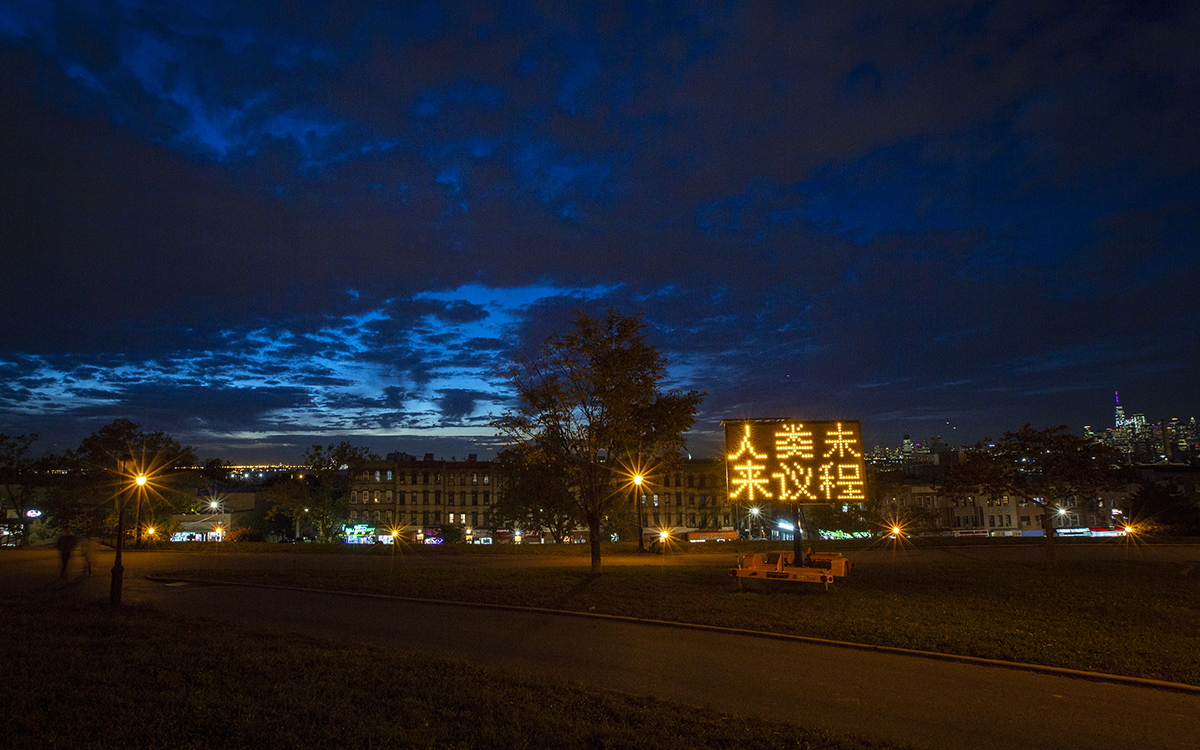
Photo by Lisa Goulet
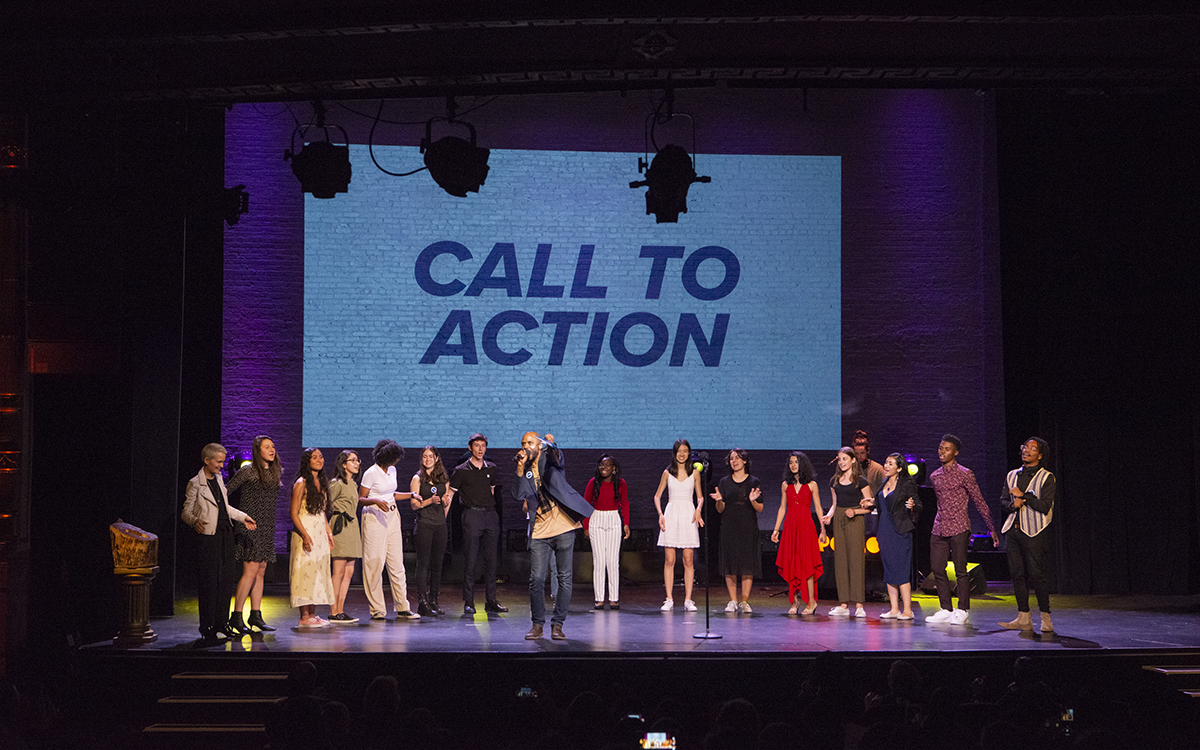
Young people performed spoken-word pieces about climate change and social justice in Harlem. Climate Museum director Miranda Massie is pictured at far left. | Photo by Sari Goodfriend
Climate Signals provided “a huge lift” for the museum in terms of public awareness, Massie says, successfully reaching the most important target audience when it comes to climate change: young people. The museum has factored the demographic into its programming since In Human Time, which featured a workshop with musician and multimedia artist DJ Spooky, and youth have been front and center in its work this year. In the spring, the museum hosted Climate Speaks, a program of spoken-word workshops that culminated in a public performance June 14 at the Apollo Theater in Harlem. The aforementioned Taking Action is inspired by teenage activists such as Jamie Margolin of Zero Hour and Greta Thunberg of the School Strike for Climate movement. The exhibition’s staff is mainly composed of high school students.
“We’re thinking about doing everything we can to elevate youth-related voices on climate through climate-arts programs for young people,” says Massie, who serves as the Climate Museum’s director. “We will be dedicating significant resources next year to that area.”
Doing so, Massie says, is a matter of necessity and justice.
“When you look at the intergenerational pillage that is going on right now, it is a shocking and disgraceful phenomenon that would be impossible to explain to a Martian sociologist,” she says. “We’re committing pillage on younger generations. It is violence in somewhat slow motion, but it is violence, nevertheless. And for that reason, young people speaking the truth about what’s happening has an irrefutable moral power.”
While Massie hopes to eventually find a permanent home for the Climate Museum, she acknowledges that the next several years will see the museum presenting its shows and events in temporary spaces such as the one on Governors Island. She also believes the museum may move into an interim “lab space” that will allow it to experiment with different ideas and offer proof of concept to potential funders. “The ultimate home for an institution as ambitious as the Climate Museum is very, very expensive,” she says.
Even so, Massie argues that climate museums should have become a familiar sight by now. The only other one in existence is the Jockey Club Museum of Climate Change, a modest exhibition space in Hong Kong.
“It’s really convenient for us that the URL ClimateMuseum.org was available for free a couple of years ago,” Massie says. “But it is outrageous—every time I stop and think about it, it makes me completely indignant. We should have a Climate Museum in Miami, in Chicago, in San Francisco. Certainly, I shouldn’t have been the person to initiate the first one in the US and the second one in the world.”
 The Magazine of The Sierra Club
The Magazine of The Sierra Club



